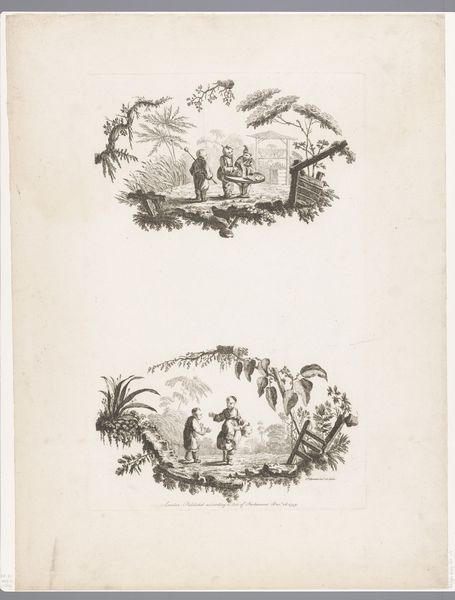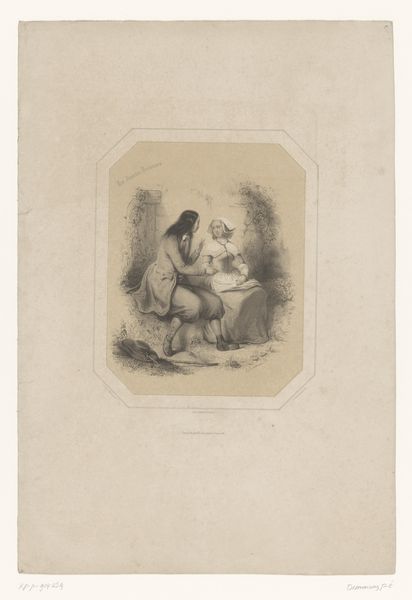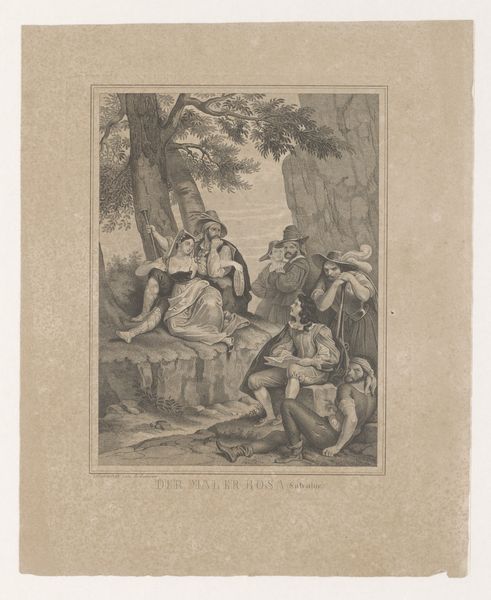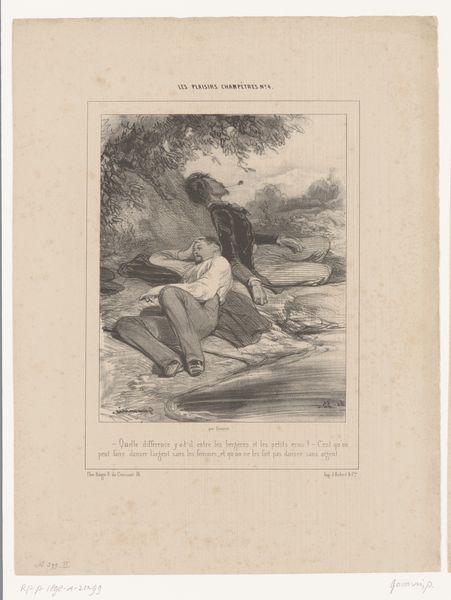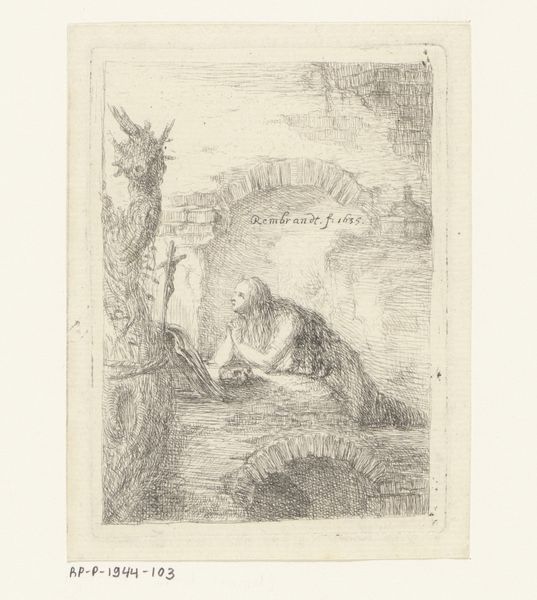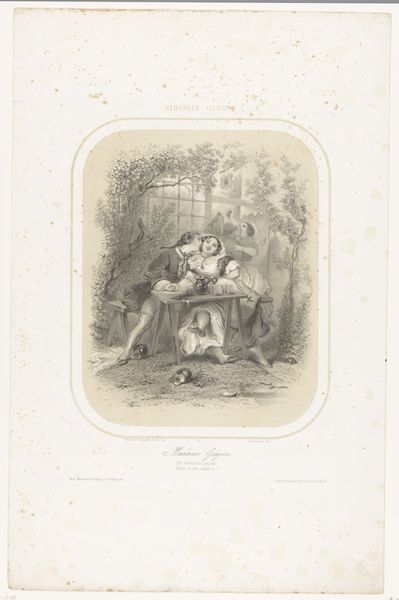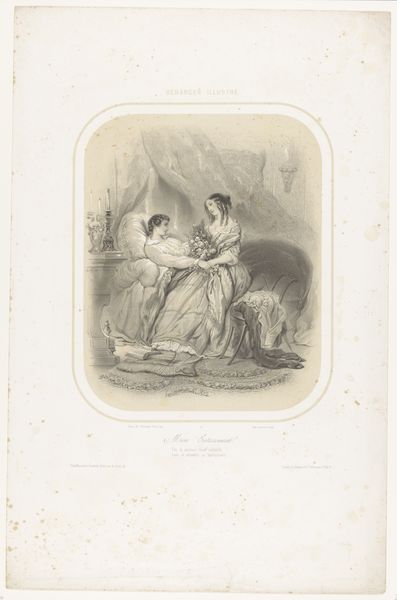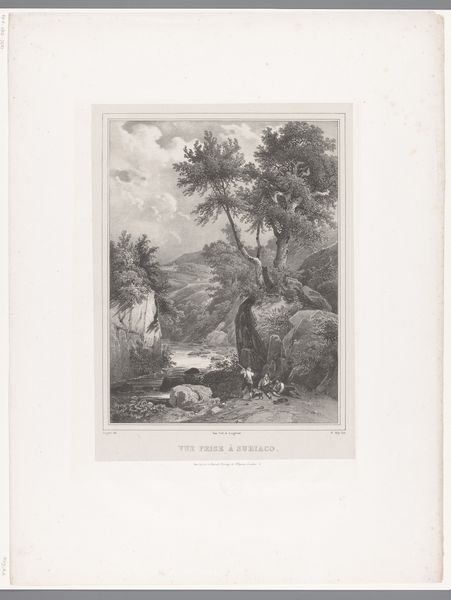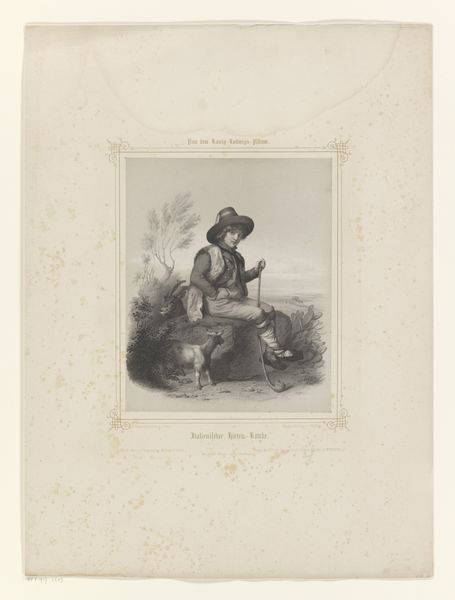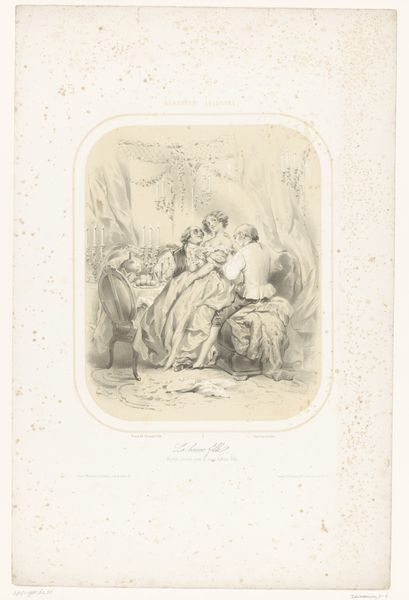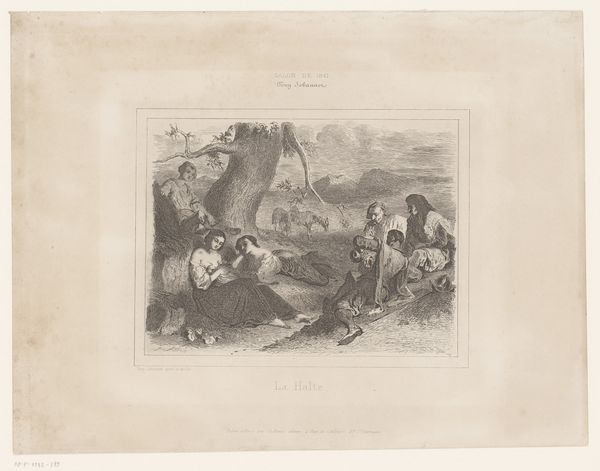
drawing, print, etching, paper
#
drawing
#
narrative-art
# print
#
etching
#
figuration
#
paper
#
france
#
sketchbook drawing
Dimensions: 110 × 87 mm (image); 184 × 121 mm (plate); 189 × 127 mm (sheet)
Copyright: Public Domain
Curator: Look at the state of distress this figure seems to be in; such a dark cloud appears to fill the foreground! Editor: And the name itself, "The Pretty Girl of Perth", certainly brings a bit of dramatic irony, don't you think? This is an etching by Charles Jacque. Look at the subtle, scratchy lines. They convey a sense of weariness and a bit of grit. How was this image printed? Were there many states? The physical production adds to my interest! Curator: Definitely. I think we're seeing a representation of the romanticism tied to Scottish culture. The melancholy pose mirrors stock illustrations for poetry. The figure covering their face in anguish could connect to ancient symbolic gestures of grieving, for instance. Note that this also brings our eye to a guitar, the instrument of a serenade that the girl seems now to be weeping over. Editor: So, we are looking at this through a class lens as well, yes? The etching, the cheap material... It becomes a mass-produced image for commoners, accessible and maybe reinforcing or perhaps lampooning certain behaviors within a stratified economic reality. Curator: It certainly speaks volumes about distribution of narratives. Yet the lone man striking out into what is probably rugged, raw Scottish land recalls more conventional romantic imagery of heroism. Is this lost love, then? We could ask ourselves whether that character will manage to find or make himself happy when the one being left behind despairs of life. Editor: Given the printmaking process of intaglio, the artist would have invested time into the corrosive, subtractive steps, yielding perhaps hundreds of nearly identical artworks; its mass production made such cultural expressions accessible to different economic groups. How was it consumed? Was it considered an imitation of fine art or something separate and of its own nature? Curator: In all of these etchings, there is always so much of a story left unsaid that speaks volumes about our inner states. It makes me curious about Charles Jacque himself. Did his emotional life align in ways he wanted, or are we seeing reflections of his desires and regrets projected onto the masses? Editor: Interesting thought! It reminds us how artwork is never created in isolation, but that artistic intention itself always requires labor. I wonder who else has worked on or touched this material? Let's investigate other productions by the same printer to reveal more context and gain deeper understandings.
Comments
No comments
Be the first to comment and join the conversation on the ultimate creative platform.
